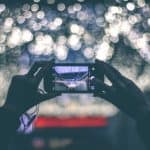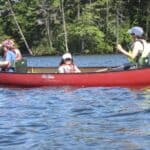Let’s talk about the National Broadband Plan, and its 100 Squared initiative. The goal is to get 100 million households on 100 mpbs by 2020. All well and good.
The problem is the remaining 5.5 million households, almost assuredly rural. They are not included in the plan, and there is no “phase 2” or second plan or goal to get anything to those households above the “minimum” 4mbps goal. So the urban and suburban households get the 100 mpbs; the rural households get 4 mpbs. Should we really be happy with that 25x difference?
Right now, approximately 14 million US homes do not have access to high-speed Internet at all. Here’s a map of rural broadband availability in the south, created by Southern Business and Development based on data provided by the state economic development agencies.
Also, pay attention to the debate over proposed changes to the USF, Universal Service Fund.
For an in depth look at rural broadband, from the perspective of an independent broadband provider, head to Daily Yonder for The Battle For Broadband.
“The best result for rural communities is to have locally-owned and operated broadband networks. The telephone and cable duopoly has a different vision of the future.”
What action are you taking to support equitable rural broadband?
For those outside the US, how is your country approaching the issues around rural broadband?
New to SmallBizSurvival.com? Take the Guided Tour. Like what you see? Get our updates.












Check out what Tennessee is doing to increase broadband access across the state. http://www.connectedtennessee.org
Jamari, that is a great initiative! Thanks for sharing the link. I’m sure other states have similar projects.
This is just another example of why we need to avoid moving away from local representation and federalism towards national representation.
Background
The British Government claimed that Parliament represented all the citizens of the British Empire. The colonies argued that since they were not able to select local inhabitants to represent them, that the rights which had been granted to British citizens through the centuries were being denied to the Colonists.
When it came time to create the Constitution of the United States, the writing was impacted by a desire to avoid two extremes which had been experienced by the framers during their own lifetimes. One extreme was the lack of local representation under British rule, the other extreme was the hyper-localization under the articles of confederacy.
The framers of the Constitution were striving for a balance. Article 1 Section 2 tried to guarantee that each locality would have a representative in the House. Article 1 Section 3 tried to guarantee that each STATE GOVERNMENT would have two members representing the State Government in the Senate. Article 2 Section 1 tried to guarantee that each locale and state would have a SIGNIFICANT say in who would be President.
Rural America
The first two steps away from the intent of the Framers of the constitution began when the rural areas lost the ability to have a significant effect upon the Senate and upon the Electoral College.
In any state which has both large Municipalities and rural areas, the “Winner Takes All” approach to apportioning the Electors to the Electoral College means that the population of the municipalities tends to overwhelm the vote of the rural areas. An arrangement which would allow a more appropriate representation would allow each congressional district to elect one elector and the winner of the Statewide Popular Vote would get Two electors as well as any electors that he/she got from the Districts. This would allow Rural Areas to have some significant say in Presidential Politics.
The Rural Areas lost their influence upon the US Senate when Senators began to be elected by a Statewide Vote. Prior to this the rural area’s local State Representative and the local State Senator participated in the State Legislature’s Selection of the Senator. Now the Municipalities have a larger impact upon who is US Senator.
The Future
There is a movement afoot to let the Largest Municipalities in the USA decide that they know what is best for rural America. It is called the National Popular Vote movement. If the Presidential Election is determined simply by Popular Vote only, the Candidates will only visit the Largest Cities and those Regions with the densest population and rural America can go “whistle for its supper.”
If you don’t like the way Rural America is being dictated to by people who live in Urban Skyscrapers and how Rural America is being ignored when it comes infrastructure, just look at how Washington has ceased to be a “federal” government and is becoming a “national” government.
James, thanks for the discussion on the continuing struggle for rural representation.
Oklahoma’s Broadband Mapping project can be found here: broadbandmapping.ok.gov
And, ironically, I cannot use the Oklahoma project page, because it cannot recognize my rural address.